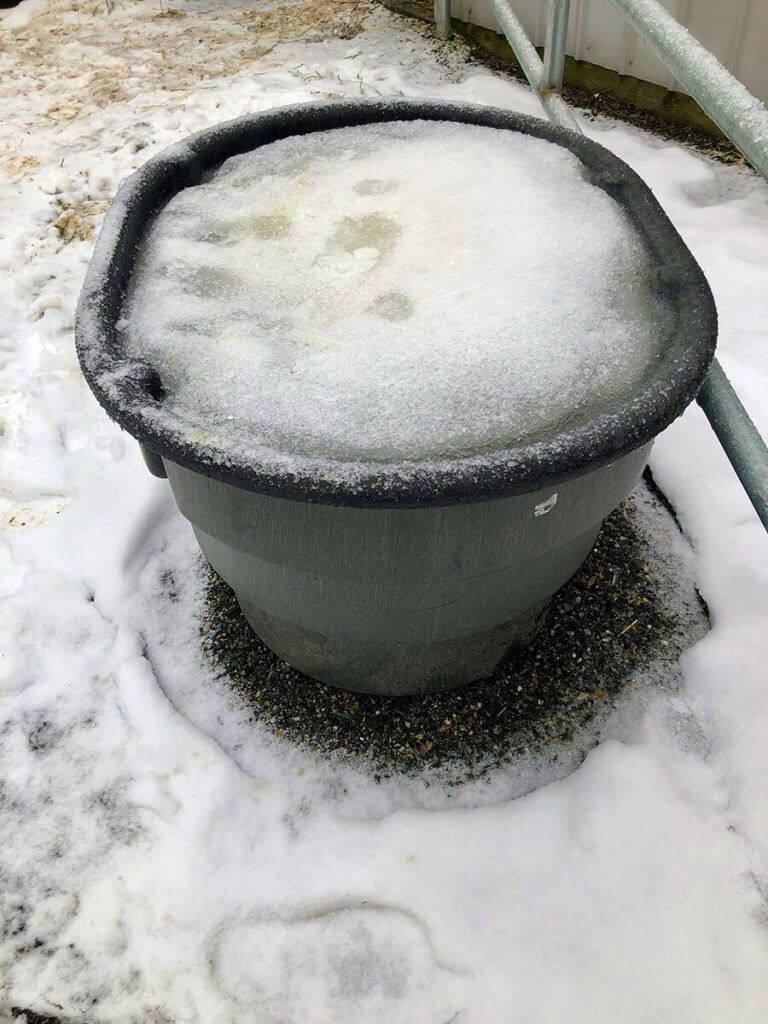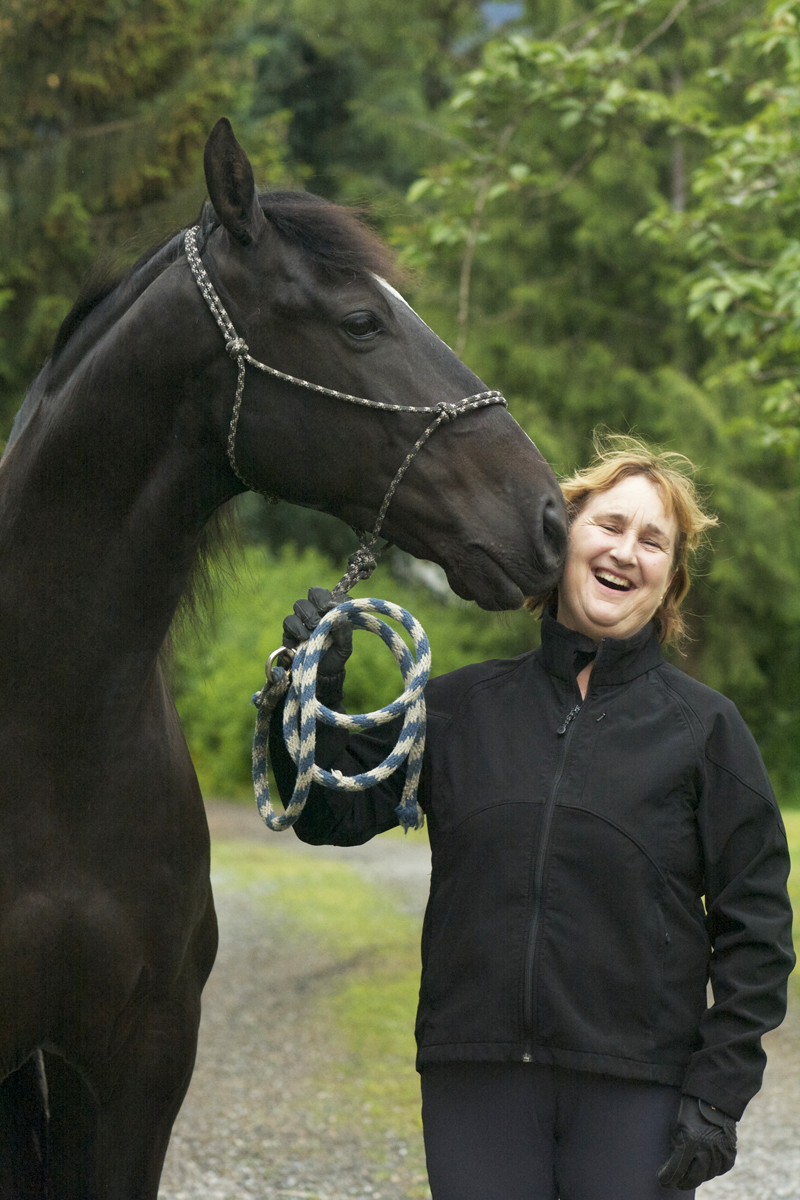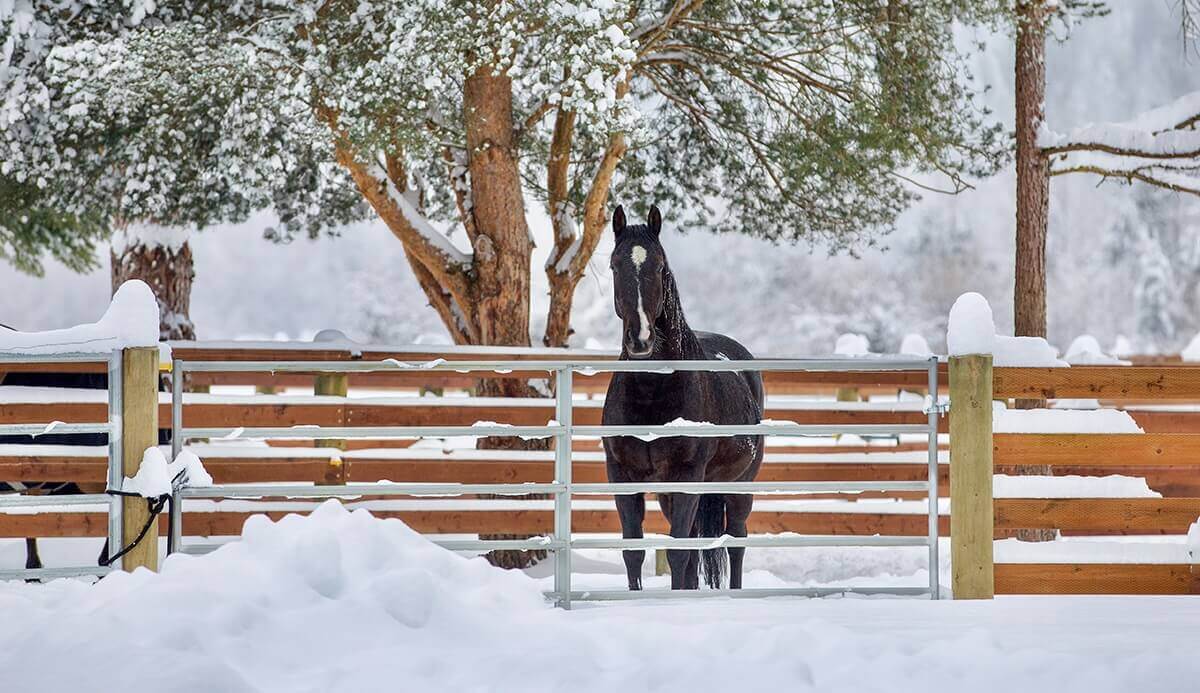5 Strategies to Make the Cold Season a Little Easier
As summer fades into fall, the natural world prepares for winter. Birds migrate south, horses grow furry, and squirrels stockpile grain and nuts. We humans also need to get ready for the long cold winter and for the hardships and isolation severe weather brings by planning for our own needs as well as those of our livestock.
If we’re responsible for horses, we need to make sure we’re doing everything we can to see them through winter in the best of health, keeping them safe and comfortable. Preparing their home and ours is part of the rhythm of the seasons, and it’s important to be sure we’ve done everything we can do. Here are five strategies to make sure you’re ready.
1. Hay and Bedding
Take a lesson from the squirrels and be sure your highest priority is having enough forage stored to get your horses through any snow or ice-bound times. Horses need ample amounts of hay to keep them warm in the winter, so keeping plenty of hay in front of them in slow feeders is a good practice. If storage is a problem, keep at least two weeks’ worth of hay in your barn in case impassable roads prevent a trip to the feed store.
Whether your horses are stalled or have access to a run-in shed, consider bedding them with shavings or straw to give them a soft, dry place to lie down out of snow and ice. Stock up on bedding before the first snow flies or temperatures drop below freezing.

2. Water
We all know water is essential for horses’ health, and they need constant access to clean water free of ice. Colic due to dehydration is a real concern in winter due to frozen water sources.
Strategize now on how you’ll keep your horse’s water in a liquid state. Electrical outlets need to be properly installed by a qualified electrician and located close to your horse’s water supply to allow safely plugged-in water tank heaters without the use of long extension cords. Freeze-proof hydrants placed close to where the horses live are essential and allow you to use short lengths of hose that can easily be drained and stored in a heated tack room or mud room. Investing in automatic, freeze-proof waterers is a time and labor saver in winter and summer.
3. No Foot, No Horse
If you don’t ride when the snow flies, pulling shoes may be the best choice for winter hoof care. Horses can injure themselves seriously by slipping on ice, and hard-packed snow on their soles can cause bruising and even founder in extreme cases.
Barefoot hooves have better traction on ice and snow and tend to create fewer snowballs in their soles than a shod hoof. If you do need to keep your horse shod in winter, consider shoes fitted with snowball pads and/or have your farrier include borium on the shoes for traction.
4. Sand and Gravel
Having a pile of sand or gravel to pull from around the farm is useful in winter and allows you to deal with compacted ice or snow that’s becoming dangerously slippery for horse and human. Slips and falls on ice can be life-threatening. Clearing snow soon after it falls from high traffic areas around water sources, run-in sheds, and barn entries and then applying sand or gravel is a good practice.
5. To Blanket or Not
Horses do well in snow and cold and usually don’t need to be blanketed if they have healthy coats, have shelter from the wind, and don’t get wet. If your horses are turned out without shelter, are underweight, or clipped, you may want to invest in a good turnout rug. Choose a blanket weight that’s suitable for your horse and the weather. Winter blankets must be waterproof and breathable. It’s always a better choice for your horse to be a little too cool than too warm. A horse that sweats under a blanket is going to get chilled and is likely to develop skin problems.
Thinking ahead about your own and your horses’ needs in winter is always smart. Be prepared for whatever hardships are likely to occur in your area. Owning horses brings with it responsibility to care for them on even the harshest of winter days. Being ready means more time for relaxation and enjoying your horse in winter and less time struggling.
See this article in the September/October 2023 online edition:
Colorado Horse Source Magazine’s September/October 2023 Issue

Kim Roe grew up riding on the family ranch and competed in Western rail classes, trail horse, reining, working cow, and hunter/jumper. She trained her first horse for money at 12 years old, starting a pony for a neighbor.
Kim has been a professional dressage instructor in Washington state for over 30 years, training hundreds of horses and students through the levels. In recent years Kim has become involved in Working Equitation and is a small ‘r’ Working Equitation judge with WE United.
Kim is the editor of the Northwest Horse Source Magazine, and also a writer, photographer, and poet. She owns and manages Blue Gate Farm in Deming, Washington where she continues to be passionate about helping horses and riders in many disciplines.

